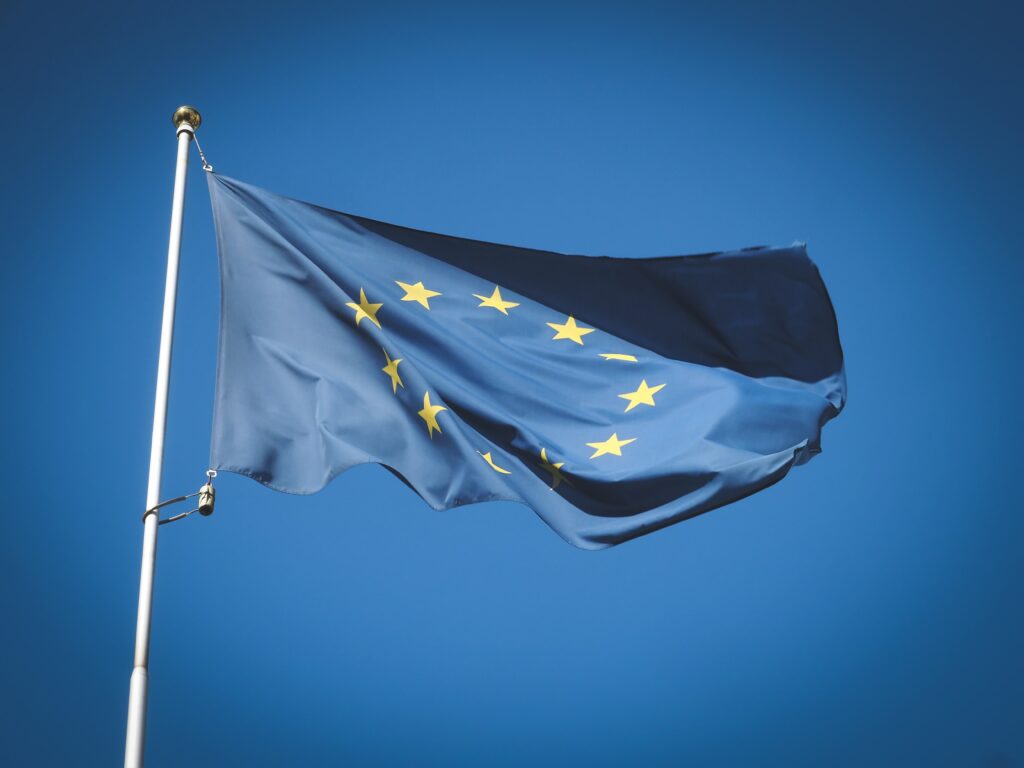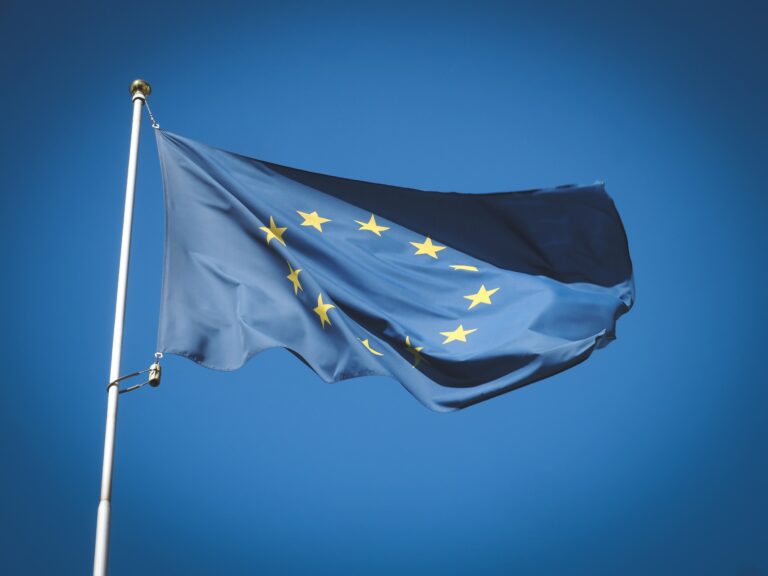The world of Environmental Social and Governance (ESG) standards feels like an ever-changing landscape. Standards consolidate and new ones are introduced. Governments and industry organizations update existing standards, or replace them with something entirely new. For businesses required to report, it can feel like a foot race just to keep up with the changes.
The European Union, through the Corporate Sustainability Reporting Directive (CSRD), has finalized its next evolution in ESG reporting for EU businesses. The largest organizations may already be familiar with the previous Non-Financial Reporting Directive (NFRD), which will be phased out in favor of the CSRD.
Whether you were already reporting through the NFRD, have an ESG program in place through other initiatives, or are entirely new to ESG reporting, the impacts of the CSRD will be far-reaching in the European business community. With deadlines approaching, companies need to understand what their obligations will be, and the level of effort required to meet the requirements of the new standard.
How Are NFRD and CSRD Different?
The scope of CSRD is significantly broader than the requirements of the NFRD, particularly in relation to who needs to report. Where the NFRD only applied to large public-interest entities, as defined by the EU Accounting Directive, with over 500 employees, CSRD phases in smaller and non-EU companies over the next three years.
By the time the CSRD is fully phased in, it is expected that more than 50,000 organizations will be reporting to the program. This is in comparison to the 12,000 who currently fall under the scope of the NSRD. By quadrupling participation in the program, the CSRD is expected to take significant steps in reaching Europe’s carbon neutral goals by 2050.
When Does CSRD Come Into Effect?
The first reporting year for companies under CSRD will be 2024, with those reports due in early 2025. The program will be phased in over four years, with more time given to those organizations not currently falling under the scope of the NFRD.
The first CSRD reporting year is as follows:
- January 2024 – companies already subject to the NFRD, i.e., EU large public-interest entities and their parent organizations with more than 500 employees
- January 2025 – all other large undertakings listed in the EU that do not currently meet the NFRD scope, as well as large non-EU undertakings or parent undertakings listed on an EU regulated market with more than 250 employees
- January 2026 – EU-listed small and medium-sized undertakings.
Small undertakings are those with fewer than 50 employees and less than €4 million on their balance sheet or €8 million net turnover. Medium undertakings are those with more than 50 employees but less than 250, and with between €4 million and €20 million balance sheet total or between €8 million and €40 million net turnover.
This is also the first phase-in date for non-EU small and medium-sized undertakings listed on EU-regulated markets, however this can be extended to January 2028 if they provide a written explanation as to why the required information isn’t provided in their annual management report.
- January 2028 – non-EU undertakings not listed on an EU-regulated market. In other words, international businesses not listed in EU-regulated exchanges, but doing business in the EU.
Are There Exemptions to the CSRD?
Since the aim of the CSRD is to dramatically expand sustainability reporting in the European business community, there are very few exemptions once the program is fully phased in.
One of the key goals of the CSRD is to enhance transparency and comparability in sustainability reporting. As such, the CSRD report will need to be included within the reporting company’s annual management report. It cannot be housed elsewhere and simply referred to.
Non-EU organizations and parent organizations who are already completing equivalent sustainability reporting will not need to prepare a separate CSRD report, but may need to refer to the existing program and report in their annual management reporting.
What Is Included in a CSRD Report?
While the CSRD is the directive that sets the groundwork for reporting, companies will be required to follow the European Sustainability Reporting Standards (ESRS) in terms of the disclosures to be provided. These are sector-agnostic standards, meaning they apply to all eligible companies regardless of industry.
The ESRS have been finalized by the European Commission as of July 2023. The final version of the ESRS is made up of two cross-cutting standards and include disclosures in the following areas:
- General disclosures
- Environmental disclosures
- Climate change
- Pollution
- Water and marine resources
- Biodiversity and ecosystems
- Resource use and circular economy
- Governance disclosures
- Business conduct
- Social disclosures
- Own workforce
- Workers in the value chain
- Affected communities
- Consumers and end users
While there are individual documents for each standard and set of disclosures, it’s important that they also be viewed as a whole program. Many of the standards refer to each other. For example, the climate change standard also refers to sustainability standards related to resilience and strategy of the business model with regards to climate change.
We’ll look at each set of disclosures in a little more detail below, but reporting organizations need to familiarize themselves with the entire program and understand its interconnectedness before beginning data gathering.
Environmental Disclosures
Climate change disclosures are aimed at documenting an organization’s contributions to limiting global temperature increases by 1.5℃. According to the Paris Agreement, these reductions need to be met by 2030, with Net Zero achieved by 2050. Reporting companies will need to disclose releases of greenhouse gasses (GHGs) including :
- Carbon Dioxide (CO2)
- Methane (CH4)
- Nitrous Oxide (N2O)
- Hydrofluorocarbons (HFCs)
- Perfluorocarbons (PCFs)
- Sulphur Hexafluoride (SF6)
- Nitrogen Trifluoride (NF3)
As is increasingly the international standard, organizations will be required to report Scopes 1, 2, and 3 GHG emissions, which requires data gathering up and down the value chain, as well as an understanding of potential overlaps between supply chain companies to prevent double accounting.
In addition to GHGs, the environmental disclosures also include quantification of other emissions and releases to air, water and soil, as well as information related to water use, discharge, and storage. While companies can essentially all expect to report GHGs, the need to report these additional metrics will vary based on operations.
Pollution disclosures are related to pollution of air, land, and water. The priority should always be avoiding pollution by phasing out raw materials and substances that could negatively impact the environment. Where this is not possible though, companies should identify steps they have taken to reduce pollution through the use of technology, or what they have done to restore, regenerate, and transform polluted ecosystems.
Specific quantifiable pollution disclosures include emissions of:
- Air pollutants
- Water
- Inorganic pollutants
- Ozone-depleting substances
It may not always be possible to directly measure annual emissions, and where this data is not available, organizations are allowed to include estimates, as long as the methodology is disclosed and a statement of data quality or uncertainty is incorporated into the pollution disclosures.
As well, the company will need to disclose any microplastics generated or used.
Companies who need to report on water and marine resources will have to provide information on their policies, as well as action taken and resources allocated in relation to those policies on an annual basis. They will need to quantify annual water consumption, including how much water is taken from areas of material water risk and high-water stress.
Along with consumption data, the water disclosures will also need to quantify the amount of water recycled, used, and stored. Once all of this data has been pulled together, the final step is to determine potential financial effects from water-related impacts, risks, and opportunities.
The holistic focus of the environmental disclosures means companies need to do more than quantify emissions, but will also have to disclose potential business risks and opportunities related to temperature increases, as well as efforts made to maintain the value of raw materials and products, thereby reducing waste and resource consumption.
Governance Disclosures
The Business Conduct standard currently covers all governance disclosures. It focuses on business practices specified by the CSRD, specifically:
- Corporate culture
- Management of relationships with suppliers
- Avoiding corruption and bribery
- Engagement by the undertaking to exert its political influence including lobbying
- Protection of whistle-blowers
- Animal welfare
- Payment practices, specifically with regard to late payment to small and medium enterprises
Under governance disclosures, companies will need to include details on policies related to the practices above, as well as information on how concerns around business activities are received, documented, and addressed. If policies don’t exist for any of the above, the organization will need to provide information on when they will be developed.
Social Disclosures
While many companies already familiar with ESG reporting may gravitate toward the environmental disclosures, since these are often concrete quantitative disclosures, a special emphasis has been put on the social disclosures as part of the ESRS development.
Beyond the growing threat posed by climate change, the COVID pandemic has exposed vulnerabilities in the European economy related to workforce stability and supply chains. Reporting organizations will be expected to pay close attention to their sustainability disclosures to better understand and manage risks and opportunities. Topics to discuss include:
- Collective bargaining
- Diversity indicators
- Adequate wages
- Social protection
- Persons with disabilities
As the global workforce continues to recalibrate itself in the pandemic era, EU companies need to be aware of and disclose indicators related to health and safety, training, and skills development, and work-life balance. Providing an employee-focused workplace is critical to maintaining economic stability into the future.
In addition to disclosures related to their own workforce, companies also need to address disclosures related to value chain employees, customers, and the community at large.
ESG programs prioritize accountability and transparency, and EU companies need to show not only are they operating ethically and treating their employees fairly, but that they’re working with vendors and suppliers who have the same priorities, regardless of where in the world they do business.
The success of an ESG strategy is often dependent on stakeholder engagement. Suppliers, vendors, and customers all need to understand the value proposition of efforts to grow and operate a sustainable business.
Why Start Preparing Your CSRD Report Now?
For many organizations, their first CSRD report is due in the next year or two. This is why the time to start compiling information for reporting is now, especially for those organizations not previously captured by the NFRD and new to
ESG programs.
The ESRS is comprehensive and requires consultation and buy-in from all levels of the organization, including subsidiaries and entities based inside and outside the EU. There will be a learning curve for the team responsible for preparing reports. Data gaps will become evident and will need to be addressed before the report can be completed and reasonable targets set.
With 2024 being the first reporting year and the first CSRD reporting deadline in January 2025 for the largest companies, this isn’t simply a compliance exercise. The 2030 Paris Agreement deadline to limit global temperature increases to 1.5℃ is less than a decade away, and the steps to meet the necessary carbon reductions are not simple or small.
The SBTi estimates companies will need to reduce their carbon emissions across all Scopes by 90-95%. These are deep cuts that require detailed analysis, transitions to new energy sources and technologies, and a fundamental shift in the way businesses operate. This degree of change is typically not something to be achieved in a single financial year to meet a reporting deadline.
Any ESG program needs a team to champion efforts and centralize data collection. Given the scale of what needs to be reported and who information needs to be gathered from, companies have to be confident in their data quality and version control for reports.
How AMCS Can Help With the CSRD
With the large time commitment and amount of data from across multiple geographies required for a CSRD report, a cloud-based software like the AMCS Sustainability Platform can:
- Streamline data collection and centralize sustainability information
- Automate GHG accounting and calculations in real-time
- Update methodologies used to comply with internationally accredited frameworks
- Customize reports to meet the requirements of individual ESG standards including ESRS
The time to start preparing for your CSRD deadline is now. If you’re ready to begin, schedule a meeting with an AMCS
solutions advisor today to learn how we can help streamline your sustainability reporting and climate disclosure program.




